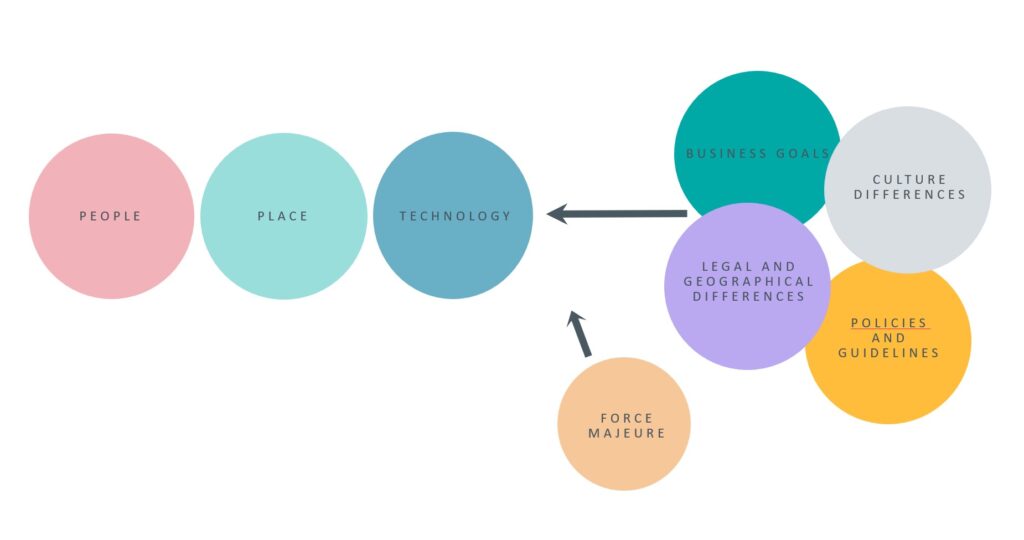A Workplace Strategy is a framework for creating an exceptional employee experience by aligning people, place, and technology. It establishes a clear plan for how teams collaborate and identifies the workplace design, digital tools, and leadership practices required to support this vision.
A successful Workplace Strategy would foster employee engagement, contribute to attract top talent, and enable the organization to deliver an outstanding customer experience. A robust Workplace Strategy treats the workplace as a strategic tool, combining the physical environment, people, culture, and technology to align with the organization’s business goals and objectives.
Benefits of a Well-Executed Workplace Strategy
When developed holistically with an inclusive and transparent process, a Workplace Strategy can drive performance and contribute to an effective and inspiring workplace. The outcomes may include:A well performed workplace strategy will lead to effective and efficient workspace designs that supports your ways of working and leads to:
– Enhanced brand experience and identity
– Improved employee experience, including better work-life balance, satisfaction, and overall well-being
– Increased performance, communication, and collaboration
– Enhanced ability to attract and retain top talent
– Greater organizational agility, flexibility, creativity, and innovation
– Reduced real estate & facilities costs
– Decreased environmental footprint
Main components when developing the workplace strategy

Key Areas Addressed in a Workplace Strategy
The Workplace Strategy should provide guidance and answers to critical questions, such as:
– Hybrid/Flexible Work Models: How to support employees who work both onsite and remotely
– 100% Onsite Work: Approaches to fully onsite roles
– Remote Work: How to support employees working entirely from home
– Home Office Equipment: Standards and recommendations for remote work setups
– Leadership Guidance: Best practices for leading hybrid and remote teams
– Compliance with local laws and regulations: Understanding legal responsibilities for remote/hybrid work and home office setups
– Workplace Expectations: What employees can anticipate from their office environment, including work procedures, health, and safety
By addressing these elements, the Workplace Strategy serves as a blueprint for designing vibrant, efficient, and adaptive workplaces that support the organization’s goals and enhance the employee experience.

photo: www.jannicahoney.com